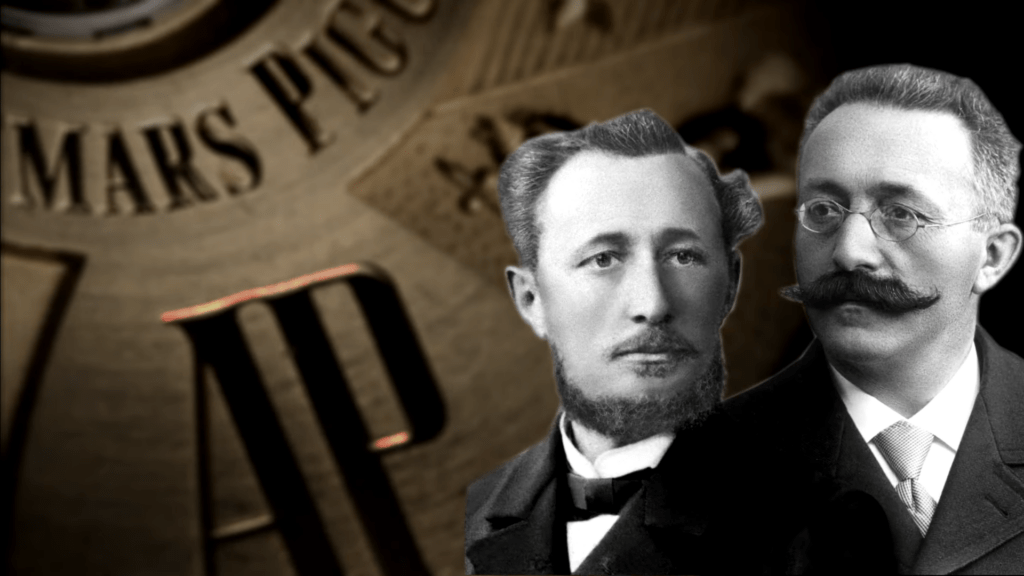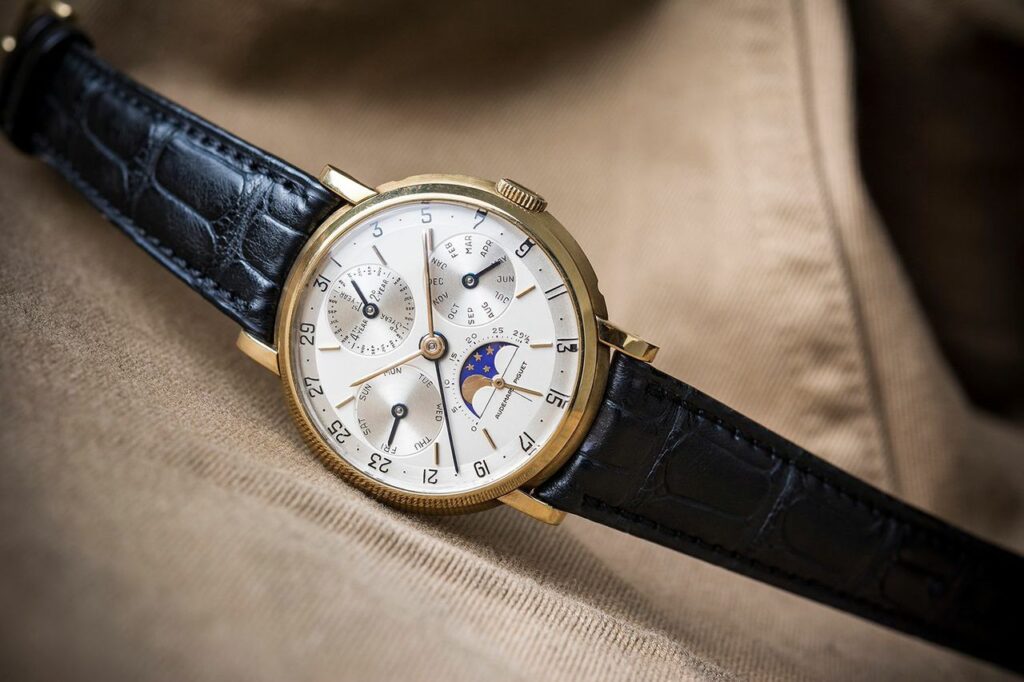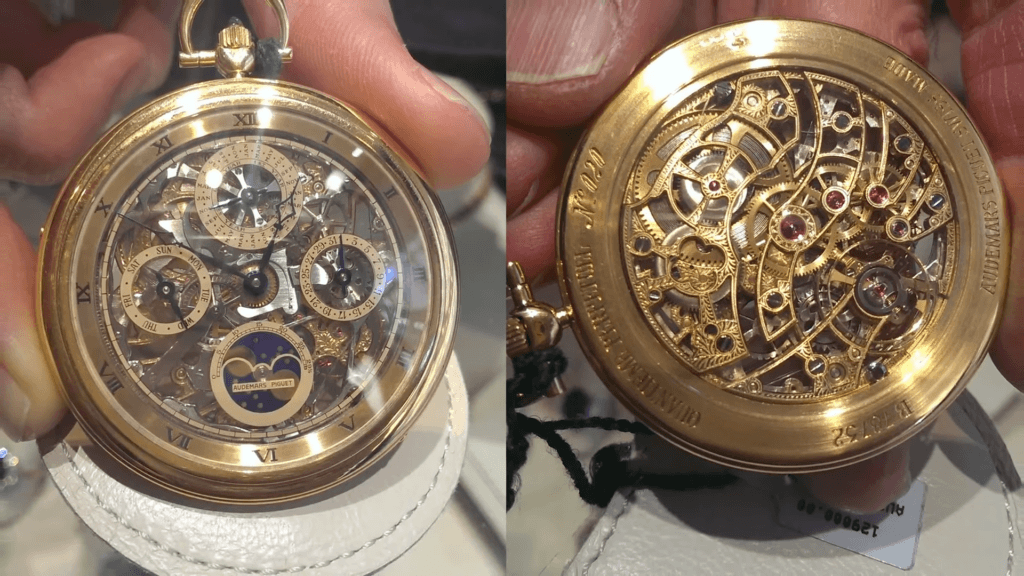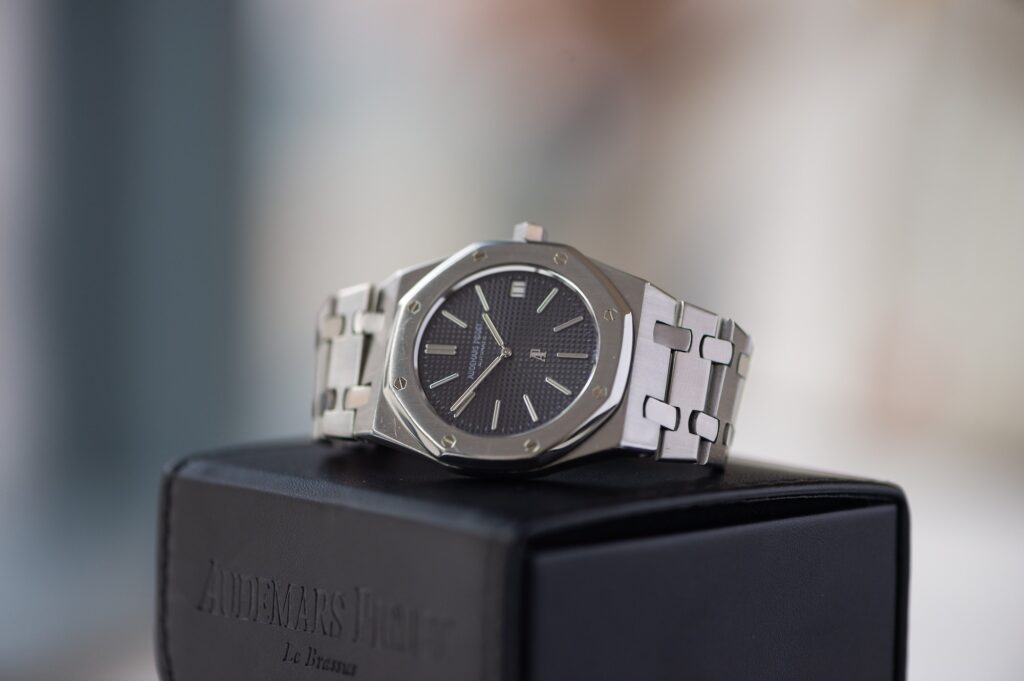Welcome to another article from Audemars Piguet Island! In this article, we’re going to talk about Audemars Piguet least known facts and secrets. Its long history dates back to 1875, when Jules Audemars and Edward Piguet started the company in their home village of Le Brassus. Aside from their magnificently alluring watches, there are some things about this luxury watch manufacturer that we think you’ll be very intrigued to know about. So, we have listed here for you 10 things that nobody has told you about Audemars Piguet and how this will shock you. Are you ready to find out what these are? Alright, we won’t make you wait any longer. Let’s dive in!

In the eyes of many, AP is said to be the epitome of fine watchmaking and has established its rank to be one of the best luxury watch companies of this time by introducing some of the most advanced timepieces. Now, let us shine the spotlight on 10 major facts that you ought to know about Audemars Piguet and that may surprise you at the same time, perhaps even convince you to an Audemars Replica Watch for yourself.
AP Created the first Perpetual Calendar wristwatch
In 1948, Audemars Piguet debuted its first-ever perpetual calendar wristwatch, the hallowed reference 5516. We take it for granted today, but truth be told, a complicated calendar wristwatch that’s able to accurately track the months with 30 days versus 31 days and yet be able to differentiate the years when February has 28 days versus 29 days but doesn’t have an indicator to tell whether it is or not a leap year can prove to be quite perplexing.

It was until 1955 that Audemars Piguet produced its first series of perpetual calendar wristwatches with a leap year indicator. This was essentially an evolution of the earlier sans leap year indicator Ref.5516, now updated with a leap year indicated in 36.5-millimeter cases. There were only three pieces produced, all of which are said to have slight dial variations but are all identifiable by their moon phase aperture at 12 o’clock and the 48-month sub-dial with leap year indicator at 6 o’clock. For greater legibility, the 48-month sub-dial was supplemented by a 12-month sub-dial at 3 o’clock that displays each month with greater clarity. These three watches were put into production in 1955 and delivered in 1959.
Audemars Piguet produced the first skeletonized pocket watch
AP introduced the first skeletonized pocket watch with an open-work dial back in the 30s. According to the Berner Watchmaking Dictionary, a skeleton watch is a watch in which the case and various parts of the movement are transparent material, enabling the main parts of the watch to be seen.

Audemars Piguet has an entire department dedicated especially to skeletonization and it does some of the best work in the business. Legibility is sufficient here, thanks to strips of luminous compounds on the hands that feel appropriate to the sporty nature of the brand’s tentpole line, the iconic Royal Oak. The first skeleton pocket watch was created by Audemars Piguet in 1934.
Royal Oak was the first luxury sports watch made of steel
I’m pretty sure you’ve heard about the superb Royal Oak series of Audemars Piguet, and did you know that Royal Oak was the first luxury sports watch?

The first production Royal Oak, the 5402 A series, made its official debut at the 1972 Basel Fair, stunning the industry with its bold, angular design and impossibly slim case. At a mere seven millimeters, the Royal Oak hugged the wrist and affected an elegance that belied its decidedly masculine lines. It is considered to be the world’s first luxury sports watch, and not long after the Royal Oak was introduced, the popularity of luxury sports watches increased.
Audemars Piguet took almost three years to sell their first thousand pieces
Audemars Piguet took almost three years to sell their first thousand pieces because its price tag was equal to the sum of 10 Rolex Submariners. The Royal Oak was anything but a runaway success, and indeed, many pundits in the industry predicted that it would spell Audemars Piguet’s demise.

After its official launch in 1972, a shocked world didn’t know what to make of the angular design. People at the time had a hard time justifying that a stainless steel sports watch could be a luxury watch and at the same time have a price tag that could get you 10 Rolex Submariners. A $3,600 price tag in 1972, no less, was not only more than many gold watches but also 10 times the price of a contemporary Rolex Submariner, the other steel icon on the market. But over time, the Royal Oak increased in popularity, and today it is unarguably the most iconic model of Audemars Piguet, instantly recognized by its distinctive octagonal shape.
Royal Oak saved Audemars Piguet financially
Royal Oak saved Audemars Piguet financially with its futuristic look and quartz movement during the 70s. As we mentioned earlier, the Royal Oak wasn’t an instant success, but it became Audemars Piguet’s best-selling watch over time, thus saving the company from bankruptcy. To understand the importance of the Royal Oak, you must first realize the era that preceded its inception. The 70s were a time of tumult in the Swiss horology industry, with many storied manufacturers on the brink of bankruptcy, that is, if they hadn’t succumbed already. This time has been referred to as the “quartz crisis,” and Audemars Piguet was no more immune to its effects than its competitors. As the story goes, it was the eve of the 1971 Basel Fair when Georges Golay, then Audemars Piguet’s managing director, contacted watch designer Gerald Genta and asked him to design an unprecedented steel watch in response to a request from Italy.

By 4 pm the following morning, the Royal Oak was all but born. What makes its success all the sweeter is that, instead of driving Audemars Piguet into collapse, which, like pretty much every other Swiss manufacturer, was reeling from the effects of the so-called quartz crisis, the Royal Oak saved the whole AP from total irrelevancy.
The first AP Royal Oak customer was Royalty
Did you know that Audemars Piguet’s first customer was royalty? None other than the Shah of Iran, Muhammad Reza Pahlavi.

The man is known for his taste for the finer things in life, be they palaces, cars, or women. He saw the potential of the Royal Oak and made sure that one graced his wrist. When the Shah set his eyes on the prototype created in white gold for reasons of cost and convenience, he ordered his custom-made white gold watch right away. The Royal Oak was actually designed as a luxury watch in a steel case, which was very novel at the time. Audemars Piguet then began the production of the Royal Oak in white gold in 1977, as the first example ever sold to the Shah of Iran.
The first Royal Oak prototypes were made out of white gold
The prototypes were made out of white gold. One of the most combative parts of the original Royal Oak was that it was crafted out of stainless steel, yet it still cost as much, if not more, than contemporary watches made from noble metals like gold or platinum. While this sounds strange, white gold was relatively affordable compared to other types of gold, which is why AP used it for their prototypes to save costs.

And while it’s true that gold is, well, gold, it’s a lot easier to work with than steel, which owes to its natural softness and malleability. Most importantly, since steel was a relatively new material for AP to work with, using white gold allowed the designers of the Royal Oak to come up with the right result before entering the then-new territory of making it in steel.
The screws are made out of gold
Its screws are made out of gold. This is a detail that isn’t noticeable at first but is a luxurious touch that enhances the watch’s exclusivity. Its screws are made out of white gold but can look like yellow gold from certain angles because they’re too small to be rhodium plated.

And yes, they go straight through the case, and the whole shebang hangs together. However, you might encounter the screws on the Royal Oak Offshore, and yep, those screws are stainless steel.
Royal Oak original name was Safari
Royal Oak’s original name. The Royal Oak was initially considered to be named “Safari.” This was a suggestion by Gerald Genta. However, Audemars Piguet didn’t think the name resonated with the AP brand. The other story is that the name Royal Oak comes from the powerful naval ships named Royal Oak and, accordingly, their nautical portholes. There are at least eight Royal Oak ships, which, if true, align with the octagonal shape of the AP Royal Oak. The prototype of the Royal Oak was named Safari, but in the end, they chose Royal Oak instead. However, a tribute to the name Safari has been given to a model in the Offshore range and can be recognized by its white dial, black indexes, and leather strap. We have the replica Royal Oak Safari available in our catalog!
Royal Oak was inspired by a diver’s helmet
Royal Oak was inspired by a diver’s helmet. Gerald Genta believed that if screws around the glass of a diving helmet could resist the water from high pressure, a watch could do the same.

After having received the design brief for what was to become the Royal Oak, Gerald Genta chanced upon a diver emerging from Lake Geneva and thought to himself, if the screws holding the faceplate were strong enough to ensure a watertight seal on the helmet, resisting the water from high pressure, a watch could surely be capable of doing the same.
Audemars Piguet has been around the watchmaking industry for a long time now, but they still keep the same goal: to make thin and complicated luxury watches that will surely make our jaws drop and eyes pop. Don’t you agree? If you’ve enjoyed this article, make sure to share it with others who might be interested in learning more about Audemars Piguet and the iconic Royal Oak or wishes to find an Audemars Piguet replica watch for themselves!